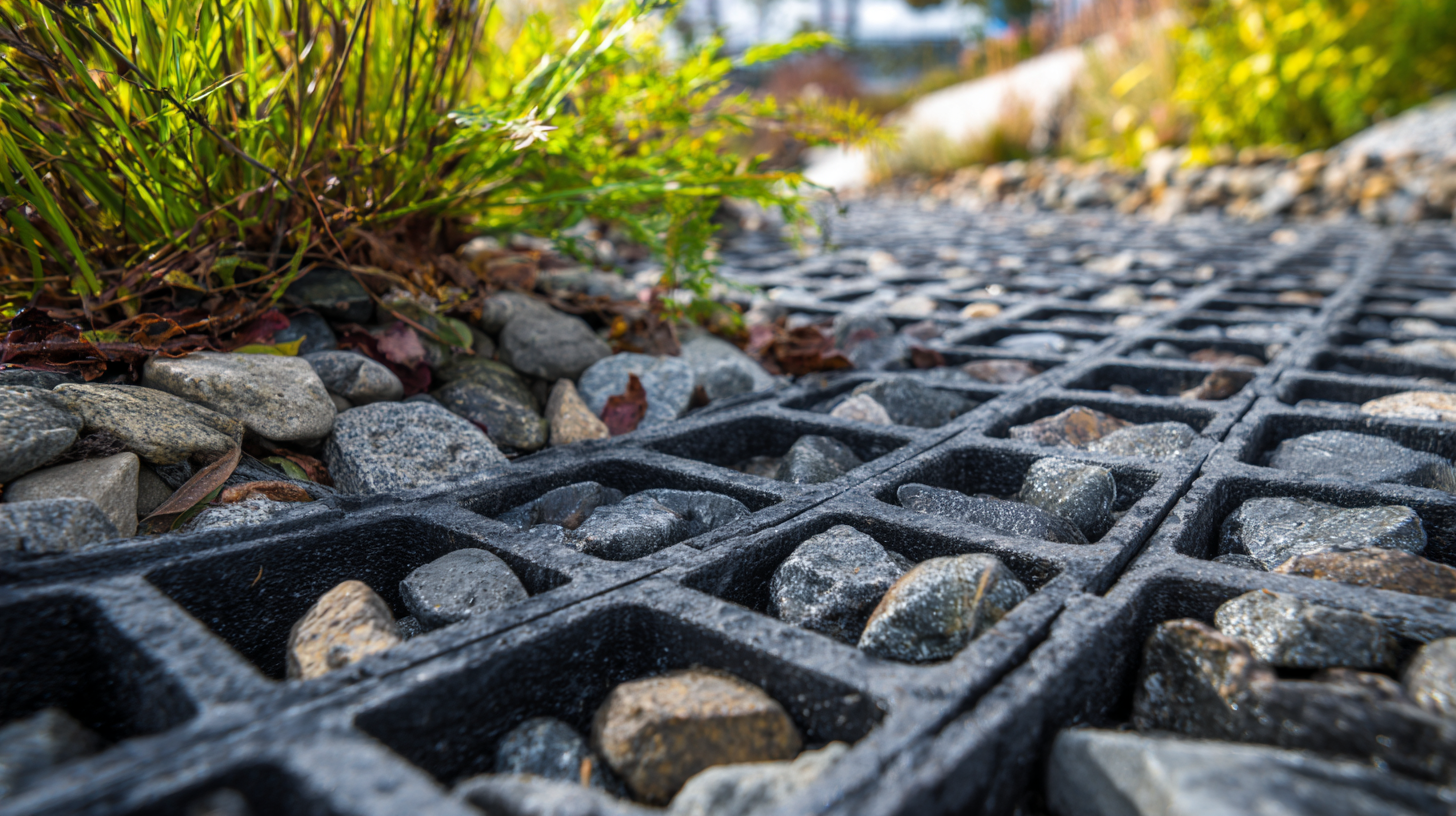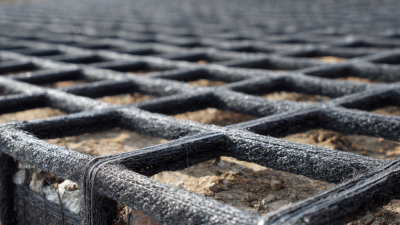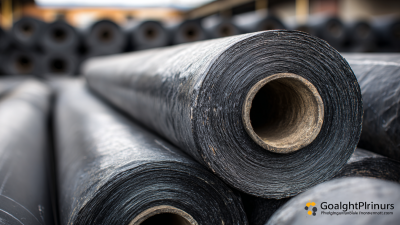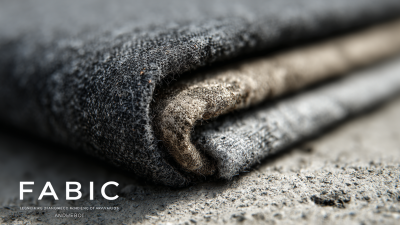Inquiry
Form loading...
- Phone
- E-mail
 In the realm of outdoor construction and landscaping, the selection of suitable materials is pivotal for long-lasting and effective outcomes. One of the most significant choices is the type of geogrid used in paver applications, as it can dramatically influence load distribution, stability, and overall longevity of paved surfaces. According to a recent industry report by Research and Markets, the global geogrid market is projected to reach $3.3 billion by 2026, with a substantial portion attributed to paver applications. This growth underscores the importance of choosing the right geogrid for pavers, which can enhance performance in various conditions, including heavy traffic and weather fluctuations. Understanding the specific requirements of your project, such as soil conditions and load expectations, will help guide your decision in selecting the appropriate geogrid for optimal performance and durability.
In the realm of outdoor construction and landscaping, the selection of suitable materials is pivotal for long-lasting and effective outcomes. One of the most significant choices is the type of geogrid used in paver applications, as it can dramatically influence load distribution, stability, and overall longevity of paved surfaces. According to a recent industry report by Research and Markets, the global geogrid market is projected to reach $3.3 billion by 2026, with a substantial portion attributed to paver applications. This growth underscores the importance of choosing the right geogrid for pavers, which can enhance performance in various conditions, including heavy traffic and weather fluctuations. Understanding the specific requirements of your project, such as soil conditions and load expectations, will help guide your decision in selecting the appropriate geogrid for optimal performance and durability.
Geogrids play a crucial role in enhancing the performance of paver applications by providing structural support and stability. When integrated beneath pavers, geogrids help distribute loads evenly across the surface, reducing the potential for deformation and settling. This reinforcement not only improves the longevity of the paving system but also minimizes maintenance needs, making it a cost-effective solution for both residential and commercial projects. Understanding the specific type of geogrid that suits your application is essential, as it directly impacts the overall effectiveness of the paver installation.
In addition to offering support, geogrids facilitate drainage and prevent erosion, which are critical factors in maintaining the integrity of paved surfaces. By allowing water to flow through the soil beneath the pavers, they help in creating a more stable environment while reducing the risk of water pooling, which can weaken the base material. Selecting the right geogrid involves considering various factors, such as the anticipated load, soil conditions, and the type of pavers used. The synergy between these elements will ultimately determine the success of the installation and the durability of the paved area.
This chart illustrates the effectiveness of different types of geogrids in various paver applications, showcasing their tensile strength and reinforcement capabilities.
When evaluating different types of geogrids for paver applications, it’s essential to consider factors such as material type, load-bearing capacity, and installation environment. Geogrids made from polypropylene or polyester are popular choices due to their high tensile strength and durability. According to a report from the Geosynthetics Institute, proper selection of geogrids can enhance the structural integrity of the pavement and extend its lifespan by over 30%. Therefore, understanding the specific requirements of your project and the characteristics of available geogrid options is vital.
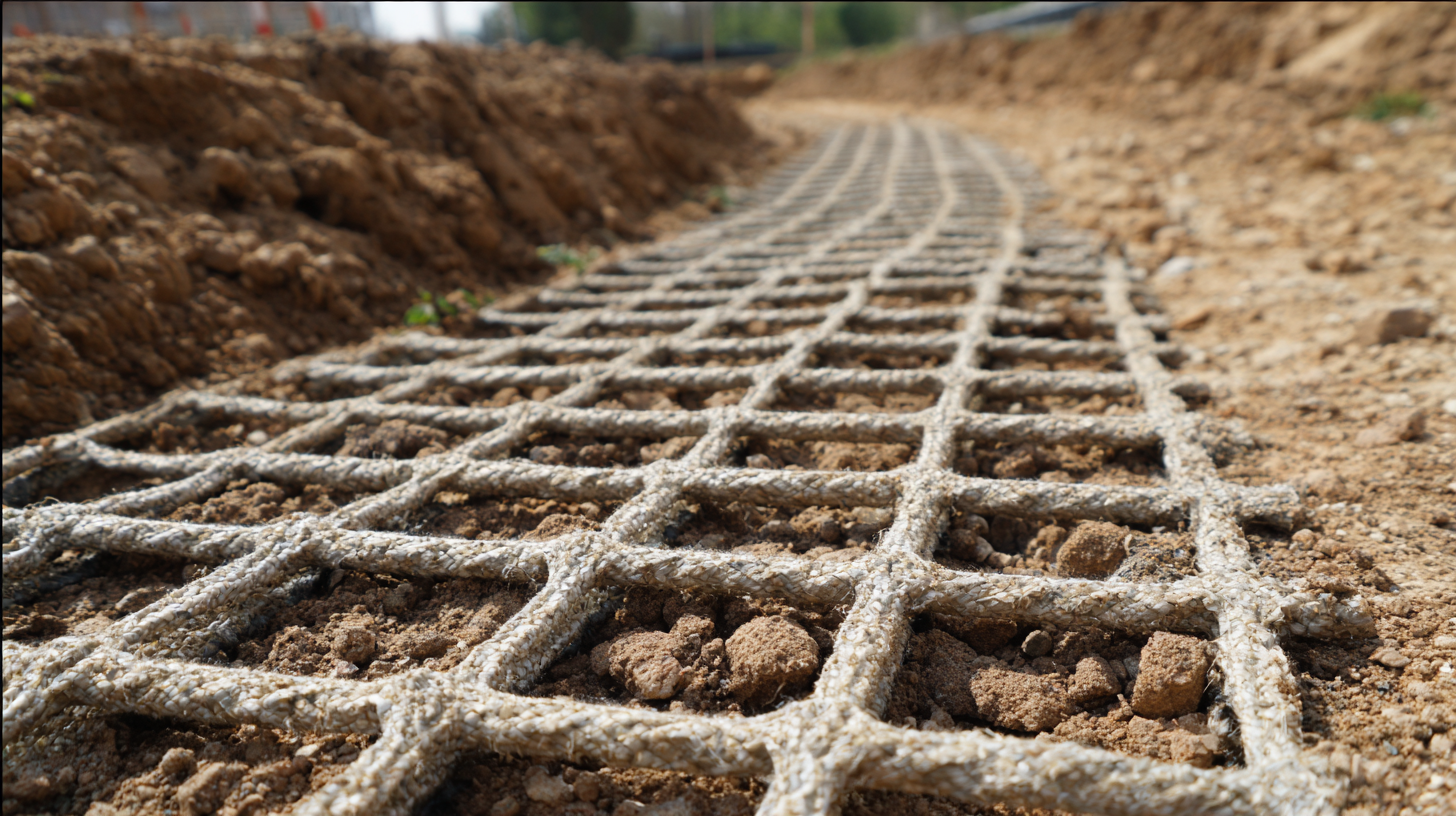
Tips for choosing the right geogrid include assessing the anticipated load: if heavy vehicles will frequently use the area, opt for high-strength geogrids that can distribute stress effectively. In addition, consider the soil characteristics; for soft soils, a geogrid that offers stabilization and reinforcement will improve performance. It can be beneficial to consult case studies or reports, such as those from the American Society of Civil Engineers, to determine which materials have been successful in similar projects. Selecting the right geogrid can greatly affect not only the performance of your paver system but also the cost-effectiveness of your investment.
When selecting the right geogrid for paver applications, several key factors must be considered to ensure optimal performance and longevity. First, tensile strength is paramount. Geogrids are typically made from materials like polypropylene or polyethylene, and their tensile strength should match the load requirements of the paving system. A report from the Geosynthetic Institute indicates that geogrids with tensile strengths exceeding 20 kN/m are effective for heavy traffic areas, preventing deformation and enhancing load distribution.
Another critical factor to consider is the installation environment. Soil type, moisture levels, and local climate can significantly affect the performance of the geogrid. For example, studies show that in saturated conditions, geogrids with higher UV resistance can last significantly longer, with lifespans extending beyond 25 years compared to only 10 years for those without such properties. Additionally, its compatibility with the surrounding materials ensures effective interlocking, which is essential for stability, especially in sandy or loose soils.
Lastly, understanding the type of pavers and their application is vital. Paver thickness and weight will influence the choice of geogrid. The American Society of Civil Engineers recommends specific geogrid types based on paver dimensions, emphasizing that using the correct grid can improve load transfer and reduce localized settlements by up to 50%. This highlights the importance of choosing a geogrid that aligns with both engineering requirements and environmental conditions.
| Geogrid Type | Material | Aperture Size (mm) | Tensile Strength (kN/m) | UV Resistance | Use Case |
|---|---|---|---|---|---|
| Polyester Geogrid | Polyester | 30 | 40 | High | Heavy Load Applications |
| HDPE Geogrid | High-Density Polyethylene | 50 | 50 | Medium | Erosion Control |
| Fiberglass Geogrid | Fiberglass | 25 | 60 | Very High | Pavement Reinforcement |
When selecting the right geogrid for paver applications, assessing load-bearing capacity and performance criteria is crucial. According to a report by the Geosynthetic Institute, geogrids can significantly enhance the load distribution across paved surfaces, reducing the likelihood of deformation and failure. Geogrids with high tensile strength and modulus, typically in the range of 15 to 20 kN/m, are particularly effective in supporting heavy loads. For instance, using polymeric geogrids in conjunction with pavers can increase the overall stability of the system, accommodating loads from vehicles while minimizing potential rutting.
Performance criteria such as soil interaction, drainage capability, and environmental resistance also play a pivotal role in geogrid selection. A study published in the “Journal of Geotechnical Engineering” highlighted that geogrids with integrated drainage properties can enhance the longevity of paver systems by allowing for effective water management, which is essential in preventing erosion and structural damage. Additionally, evaluating the geogrid's resistance to chemicals and UV degradation, as reported by the International Society for Soil Mechanics and Geotechnical Engineering, ensures that the selected material will maintain its integrity under varying environmental conditions. This comprehensive assessment of load-bearing capacity and performance metrics is indispensable for achieving durable and stable paver installations.
When installing geogrids for paver applications, ensuring optimal performance requires careful attention to detail and some best practices. First and foremost, it is essential to assess the soil conditions at the site. A stable foundation is crucial; therefore, any loose or weak soils should be properly compacted or improved before placing the geogrid. This guarantees that the paver system will have the necessary support to withstand the loads it will experience.
Another critical tip is to ensure that the geogrid is installed without any wrinkles or overlaps. Smooth installation enhances the load distribution and stability of the paver system. It can be beneficial to use a tensioning device to stretch the geogrid during placement, which helps achieve a flat and uniform surface. Additionally, securing the edges of the geogrid with stakes or anchors can prevent movement during the installation of the pavers, ensuring that the entire structure remains secure and intact over time.
Lastly, consider the spacing of the geogrid layers. For heavier load-bearing areas, using multiple layers can provide additional support and enhance the overall durability of the paver system. Be sure to follow the manufacturer's recommendations regarding layer separation and overlap to maximize the geogrid's effectiveness in reinforcing the paver application.
